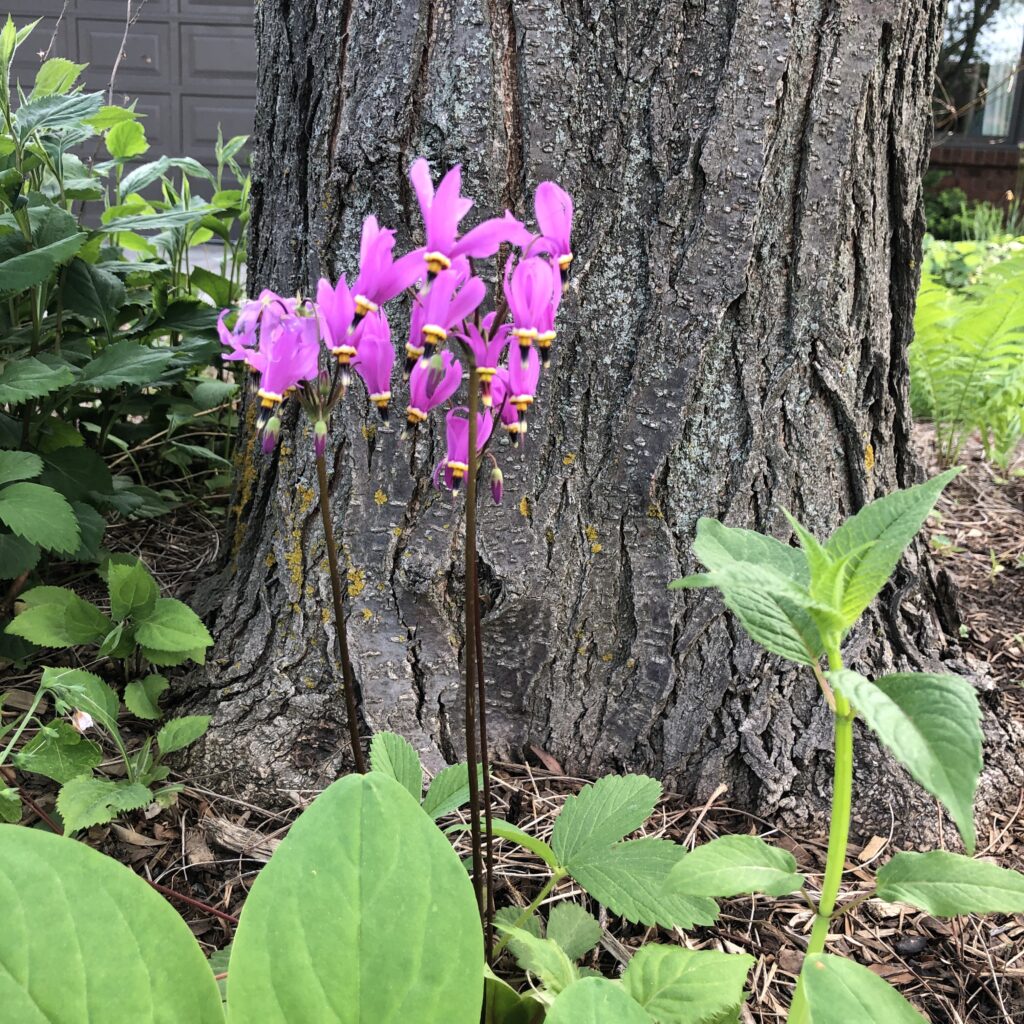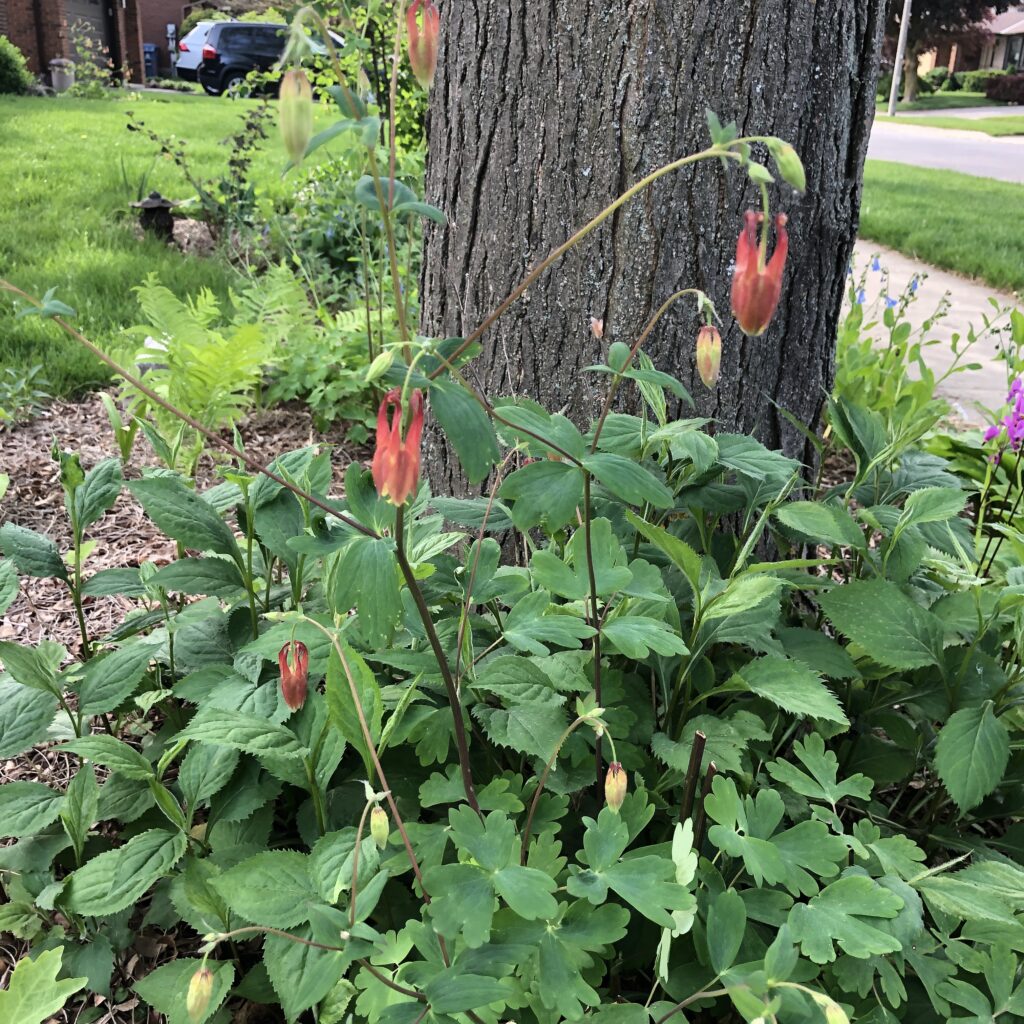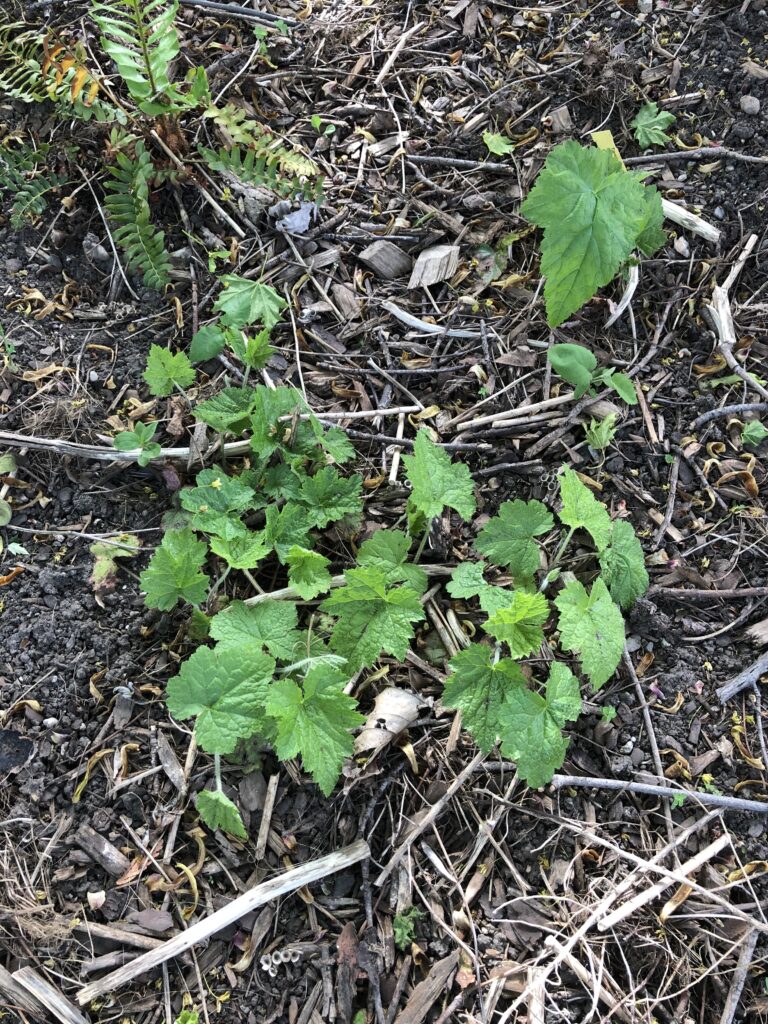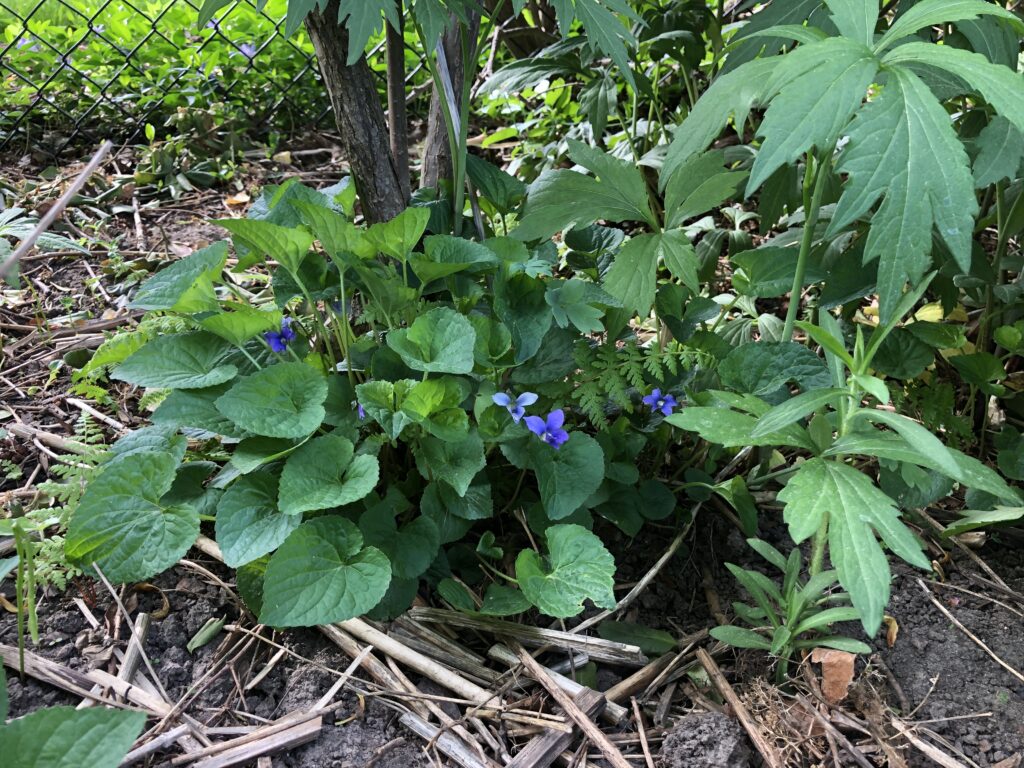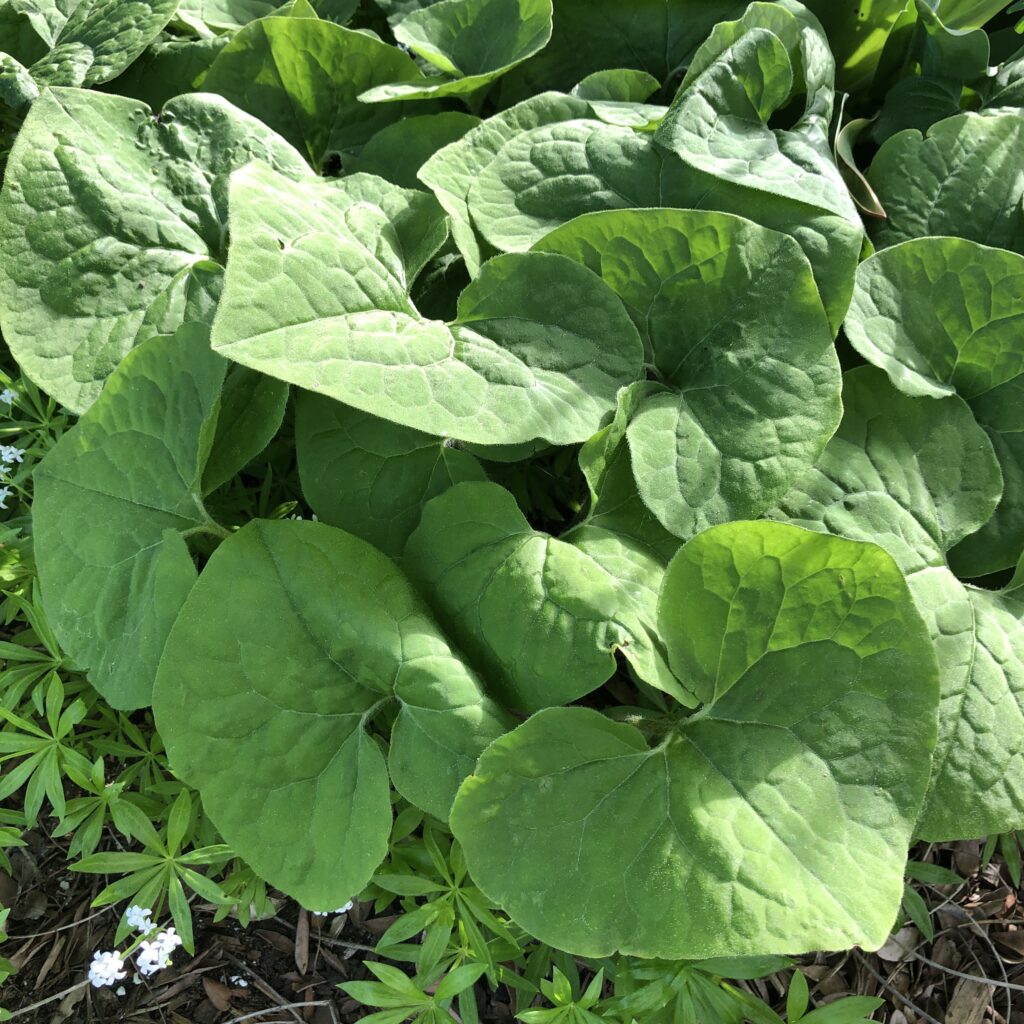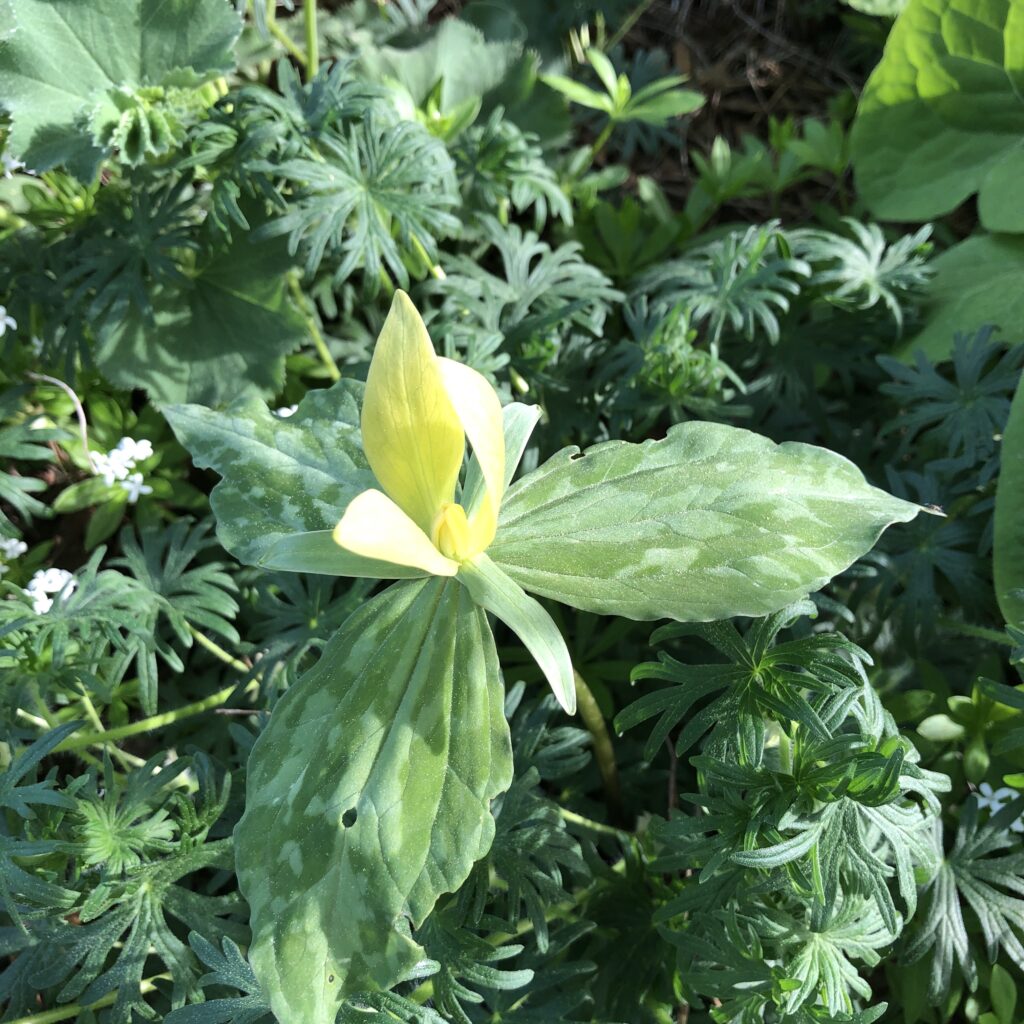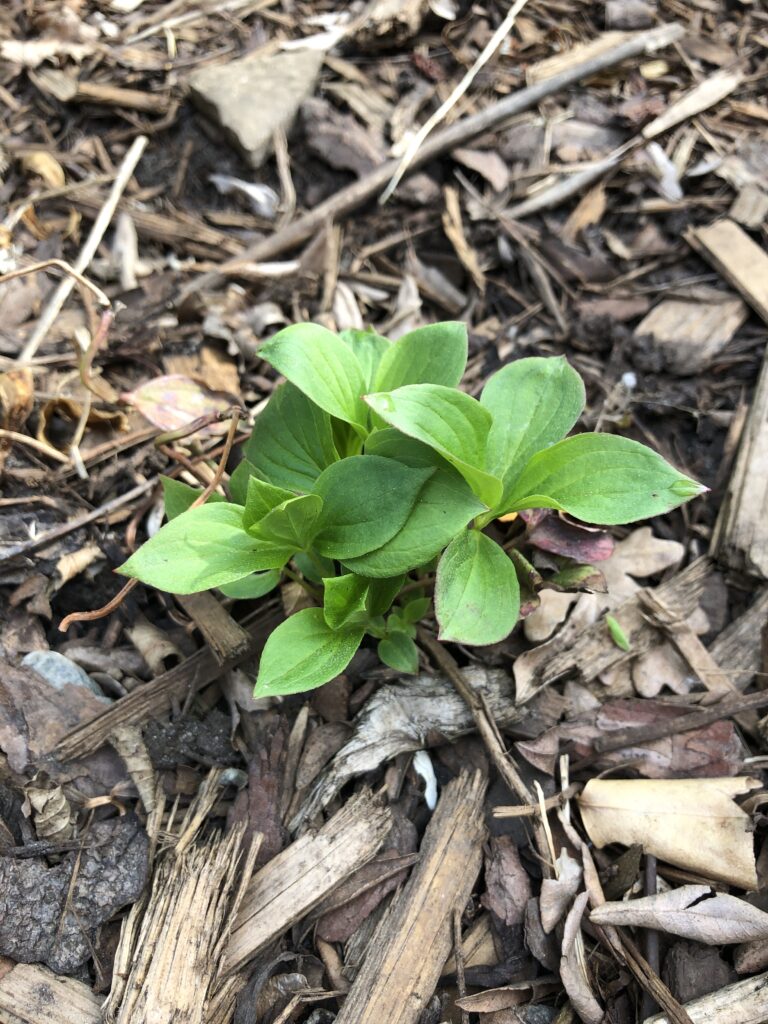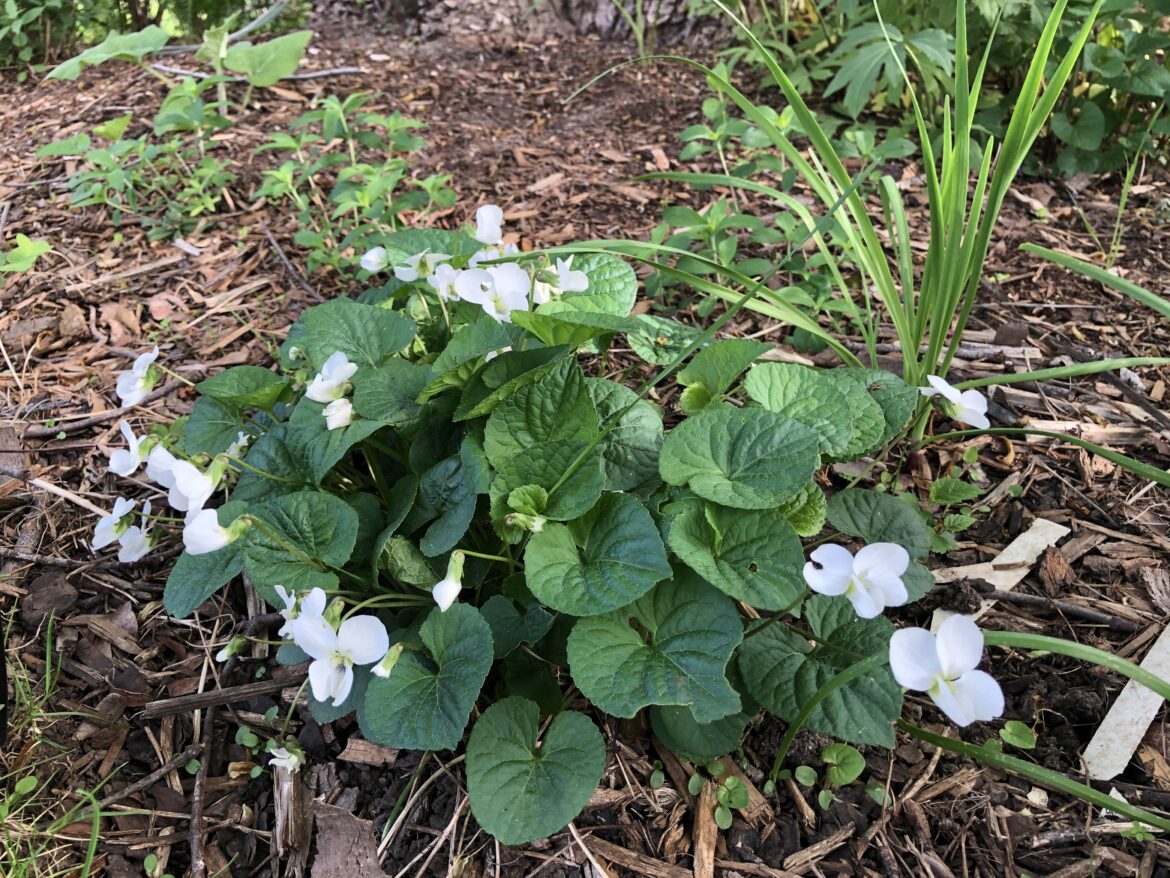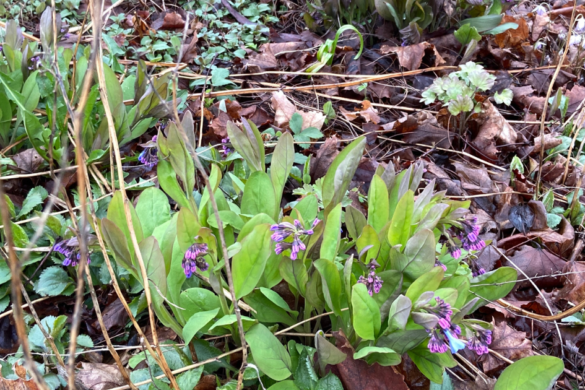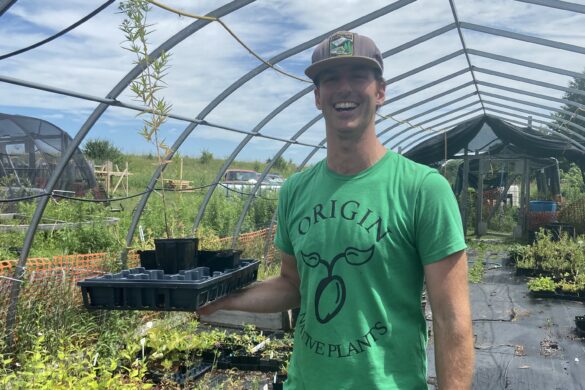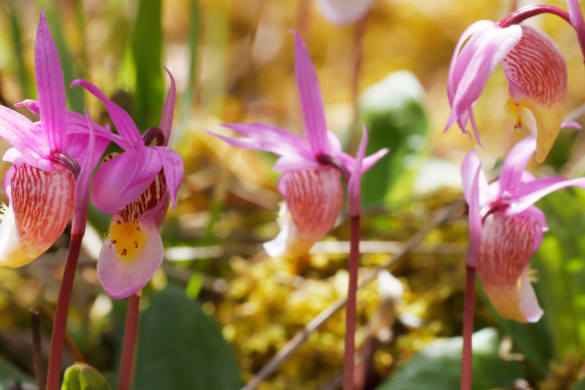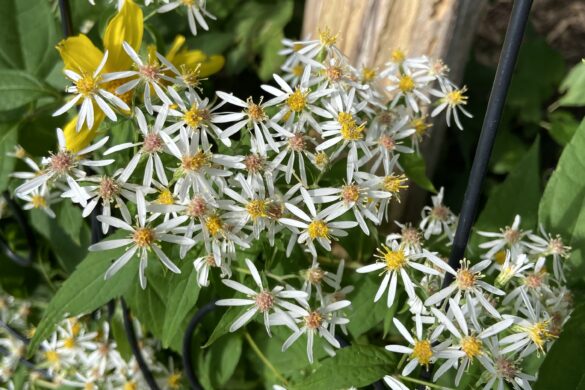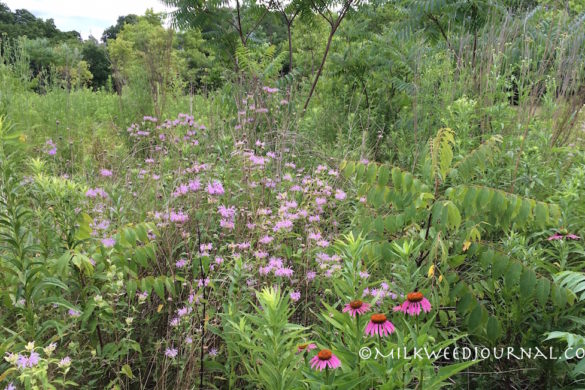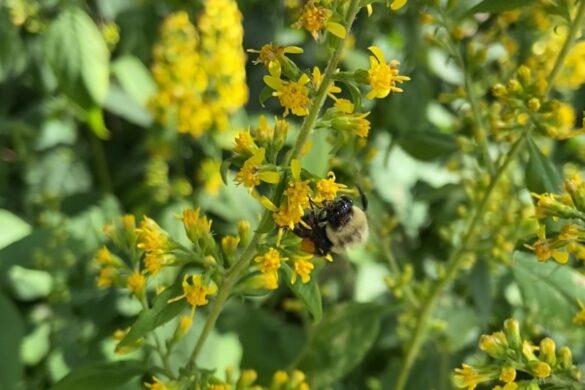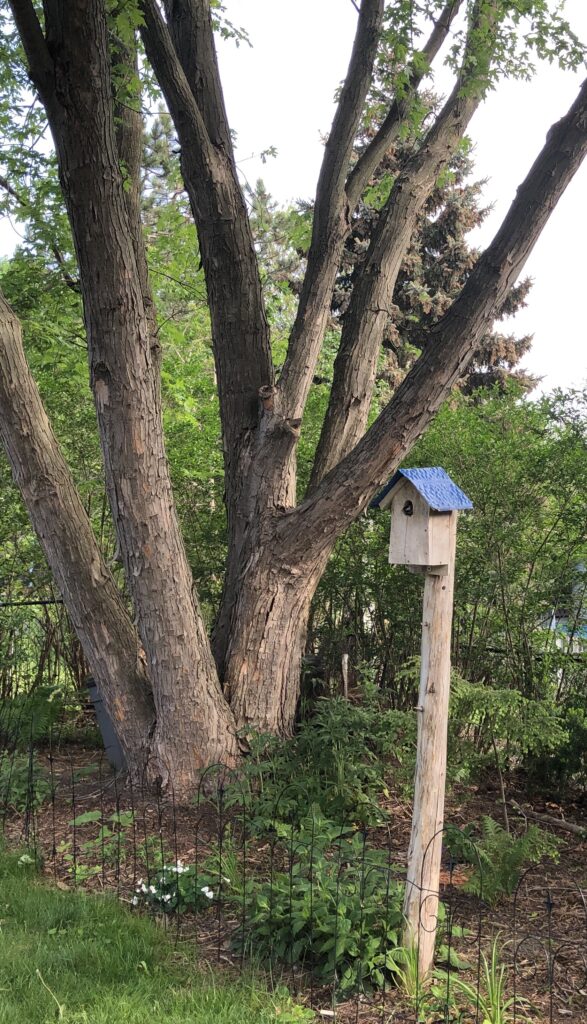
There’s a lot going on in the garden on a sleepy late May morning, Canada’s Victoria Day long weekend. The chickadees are moving at warp speed hustling insects to their babies in the little birdhouse built by my dad. A mama robin is sitting on her nest in a cedar tree near our back deck. Orioles have a nest somewhere nearby – the male enjoys the oranges we’ve put out and the female has been avidly collecting the stringy, fibrous nesting material from the the remains of last year’s swamp milkweed stalks.
Everything is leafing out. The evergreens, including two young hemlocks, are putting on bright green buds. I’m glad to see our redbud seedling sprouting tiny glossy heart-shaped leaves. It is well protected now from hungry rabbits, and looks like it will survive the dramatic pruning they gave it earlier in the year. The Spicebush, Buttonbush, Meadowsweet and New Jersey Tea seedlings we’ve planted in recent years are all coming along.
Violets are blooming purple and white, adding colour in shady spots, along with stately Solomon’s seal fronds. The Wild Ginger is lush and spreading. A couple of shooting stars add sparks of bright pink to perk up the masses of Virginia bluebells (Mertensia virginica) that are now going to seed. More shooting stars are on order from a local native plant nursery, and I’m planning to take seed from the bluebells and spread it through out the garden this weekend; I love everything about Virginia bluebells, from their magical blue blossoms to their soft, smoothy shaped bright green leaves.
Ferns are unfurling, trilliums are up – white (Trillium grandiflorum) and yellow (Trillium luteum, also known as yellow wakerobin)- and the Wild Columbine (Aquilegia canadensis) is beginning to bloom as well. The elderberry has white blossoms, and the woodland sunflowers seedlings clearly love their part-sun location – one little seedling has multiplied into dozens and some will soon go to a friend to find a new woodland home.
According to Ontario Parks, there are five native trillium species found in Ontario: White Trillium, Red Trillium, Painted Trillium, Drooping Trillium, and Nodding Trillium. The Drooping Trillium is a species at risk, found in Carolinian forests among Ostrich Fern, Wild Ginger and Jack-in-the-pulpit.
This weekend I’ll also pot up some dill for the swallowtail butterflies, and hope they also find the common hoptree we planted a couple of years ago, which is a host plant for Giant Swallowtail butterfly caterpillars.
